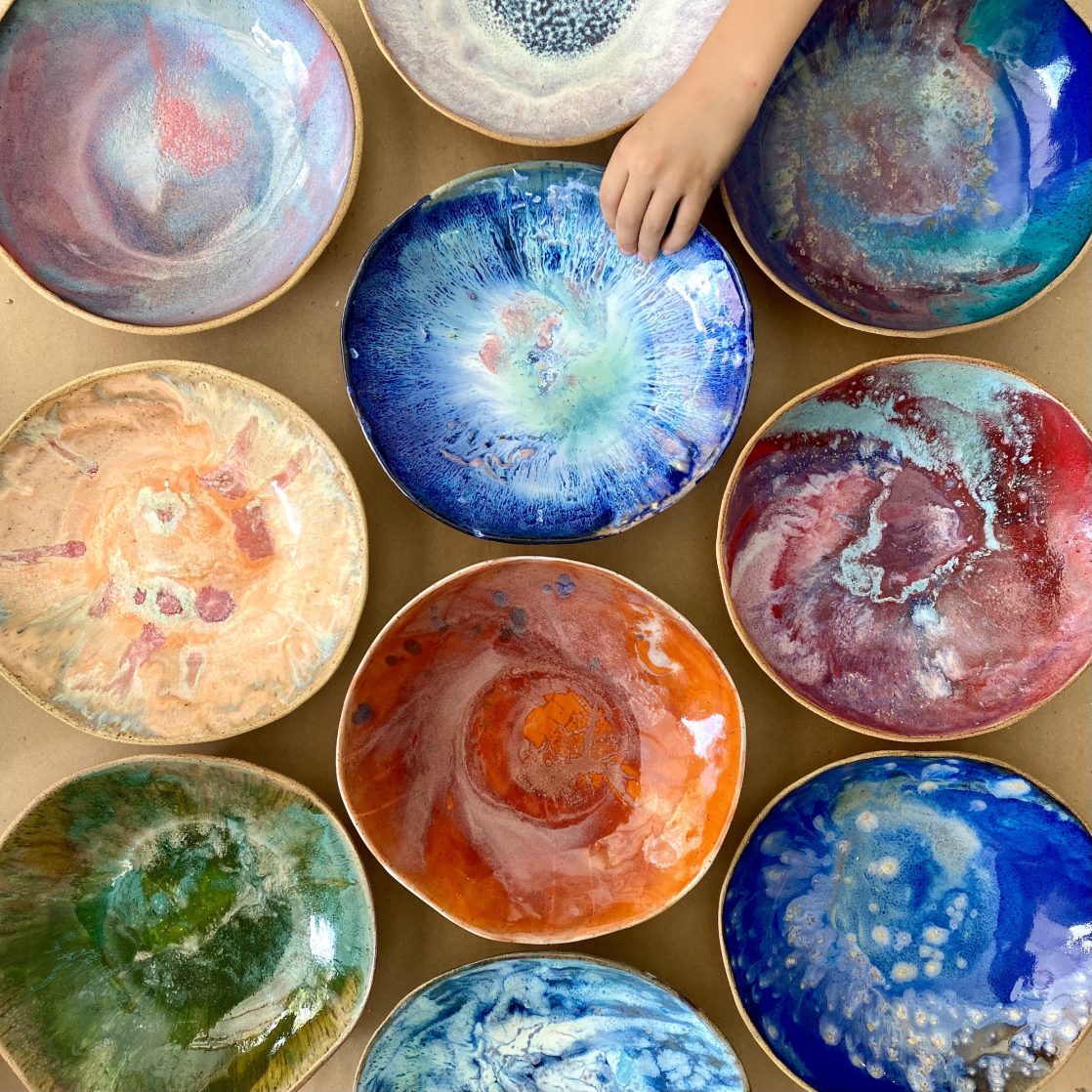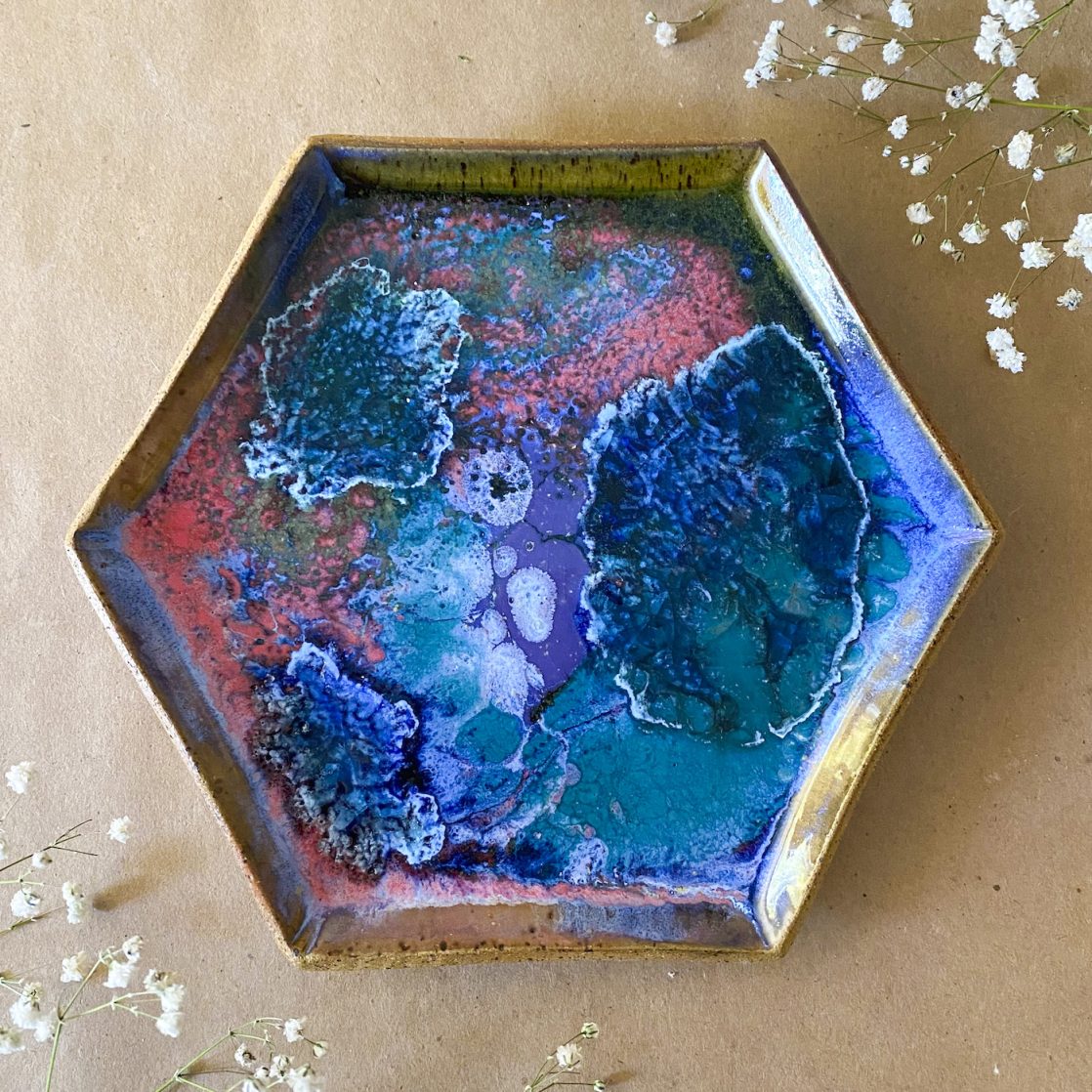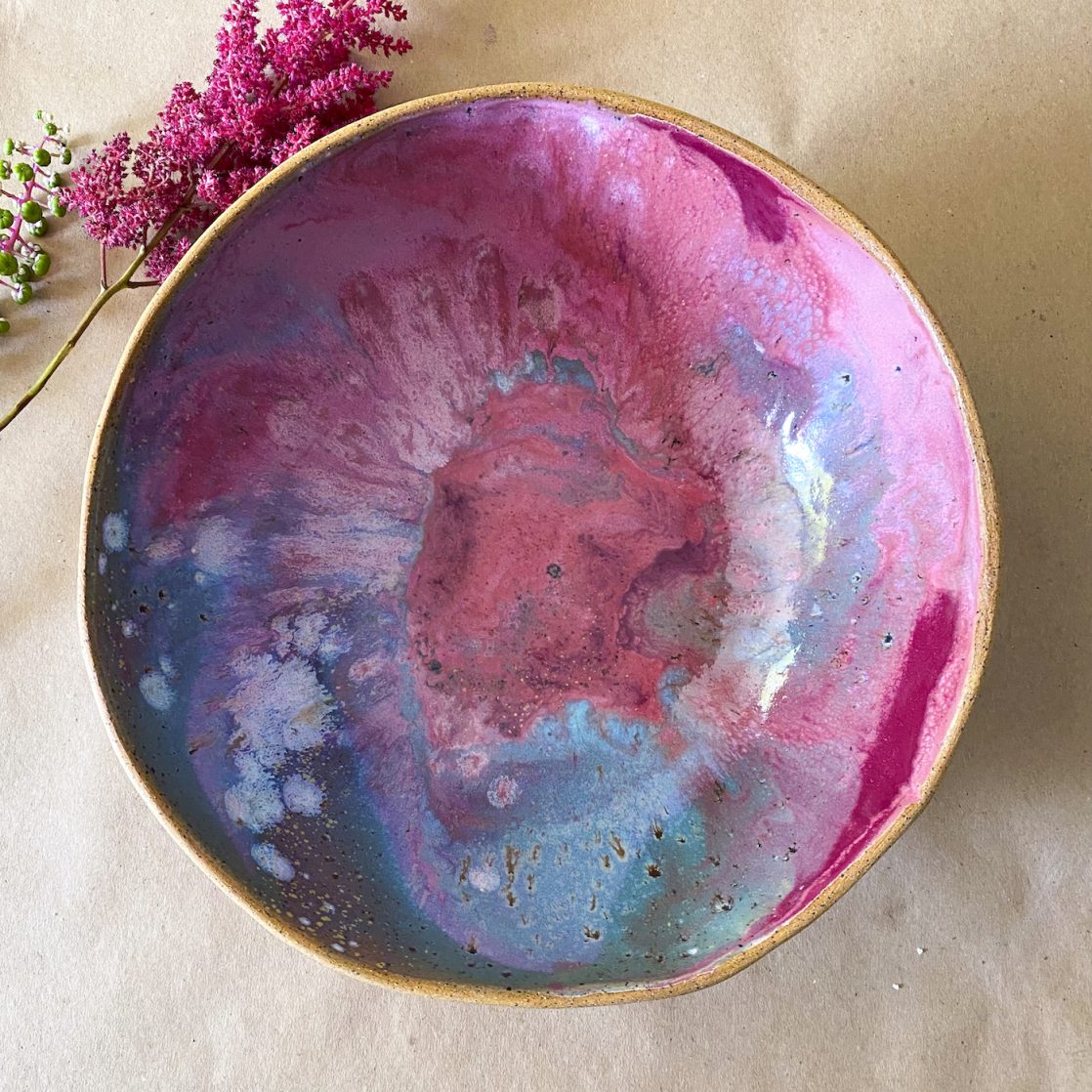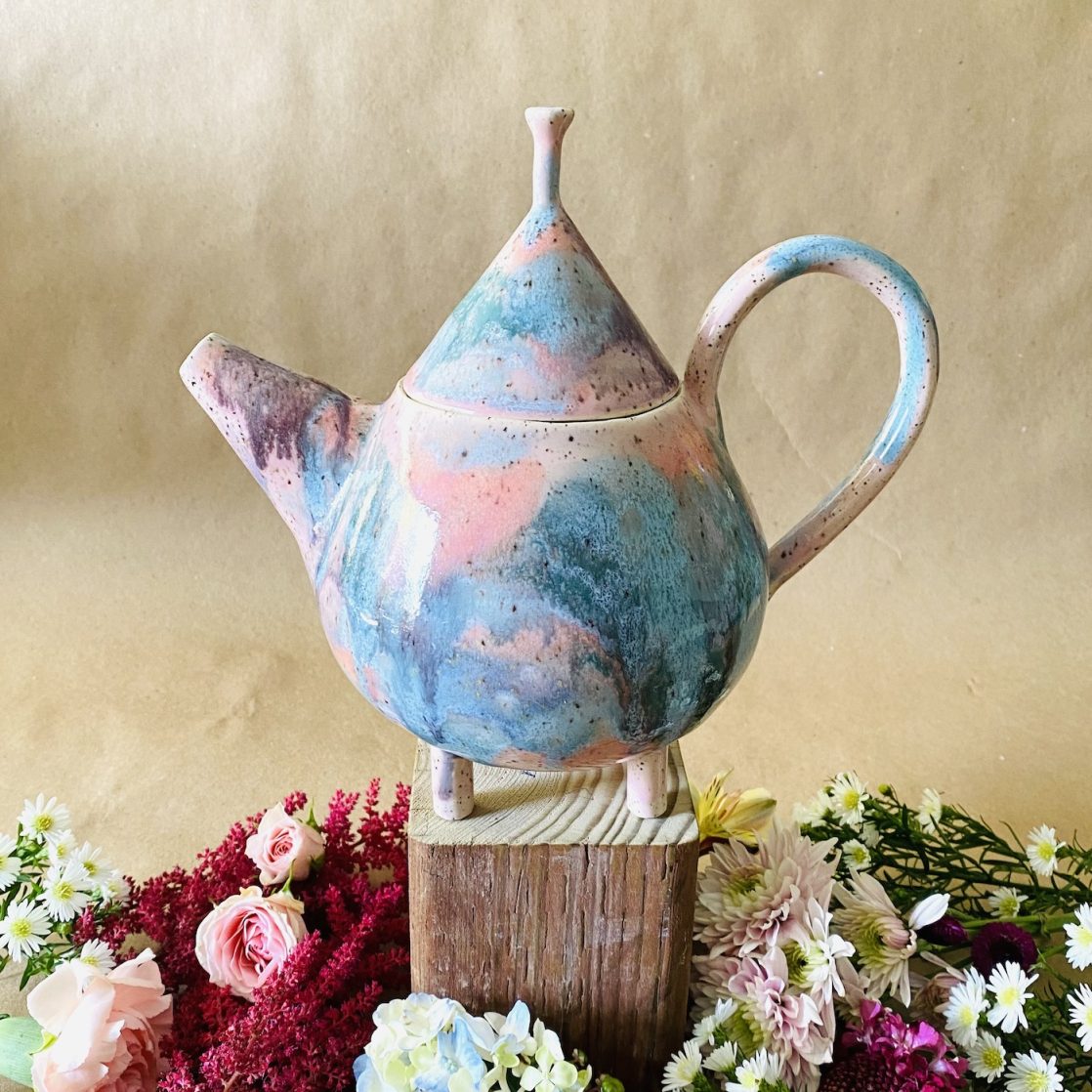Welcome to Ceramic Review
Ceramic Review is the magazine for contemporary and historical ceramics, ceramic art and pottery.
Ceramic Review Issue 328
July/August 2024
Ceramic Review is the magazine for contemporary and historical ceramics, ceramic art and pottery.
July/August 2024
Australian ceramicist Nicola Moore shares her passion for combining glazes and her exciting experiments of firing in a microwave kiln

About seven years ago I completely fell in love with the process of making ceramics. By then I had left behind a career in motion graphics and was pursuing my passion for hand-generated work. At the time it was in the form of painting large canvases with inks, encaustic mediums and fluid acrylics. Bright colours and abstract compositions were huge players in this process, and little did I know it would alchemize into glaze work a few years later.
For the first couple of years, I kept my glazing extremely simple and focused on learning handbuilding techniques and developing forms. I was working in community studios, using the glazes they offered, and my pieces were at the mercy of the shared kilns. It wasn’t until I took the leap, set up my own studio and bought a large electric kiln that I discovered the world of glaze potential.
I was finally able to start freely experimenting and developing glazing techniques. Suddenly, the world of ceramics exploded into a rainbow of colour that I hadn’t known existed before. I started obsessively buying glazes, pretty determined to have every shade, and was heavily experimenting with combining glazes in as many different ways as I could conjure.
What struck me was how my previous paintings were influencing my glaze compositions. I was drawn to the oil-spotting effect that some glazes could create when combined, which was reminiscent of acrylic-poured canvases. I would then focus my experimentation on learning the chemistry that was involved in creating that result and play with it.
The excitement of opening a kiln full of new glaze experiments has kept me evolving and developing my techniques. I have also set myself a challenge to always use a new combination or application of glaze on each piece, some of which you can see pictured here. Occasionally, I do a set or small series with a favourite combination, but I make sure to use a technique that would render each piece within that range unique.
I love to mix glazes together to make new colours and finishes that I can’t find elsewhere. I always layer several different glazes, creating new combinations, often mixing brands and glaze finishes. There have obviously been many failures along the way, but each of these has helped me build my knowledge, which has evolved into an instinct about how glazes work together.


Last year, I was drawn to iridescent and lustre finishes. The results of which were outside of what I could achieve in a cone 5/6 electric kiln. I realised that to create the bright dichroic colours that had captured my imagination, I would need a reduction cycle during firing. So, I started experimenting with raku. I had seen it being done in a microwave kiln and thought it would be a great way to test this new flow of inspiration. The initial results blew my mind – having the ability to get so many different colours on a piece, just from one glaze, was completely amazing. It was at this point that I realised there were certain finishes I was striving for that I couldn’t achieve with commercial glazes.
The lustre work of Alison Thyra Grubb and Greg Daly caught my attention, and their beautiful glazes inspired me to start making my own. The microwave kiln is the perfect tool to quickly test-fire new formulas. You can use pyrometric cones to develop the correct timing for the heat work required.
After playing with raku in a microwave kiln for a few months, it dawned on me that people could also be firing regular cone 06 work this way, and I spent many hours developing that technique. In order to share this knowledge, I have created an online course on how to fire pottery in the microwave. This makes firing ceramics affordable and achievable for so many people who may not have access to a studio, or the finances for their own kiln. It is also an amazing tool for established ceramic artists to do quick, small tests when they may not want to fire a whole kiln load.
I have finally taken the plunge and purchased a large raku kiln to go larger and further with my lustre work, and I am working on developing a variety of iridescent glaze finishes. It is beyond exciting.
For more details visit nicolamoorestudio.com; @nicolamoorestudio; nicolamoorestudio.teachable.com
